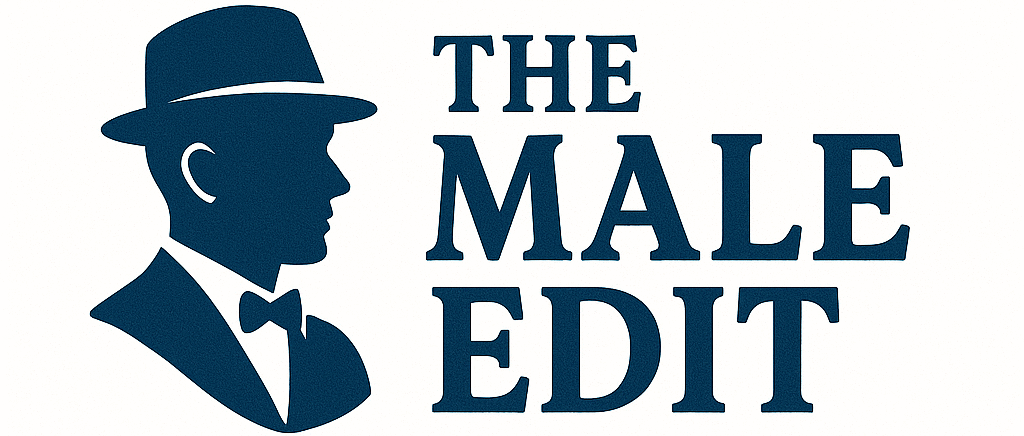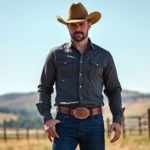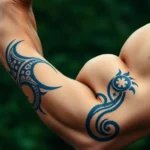Patchwork tattoos have exploded in popularity among men seeking a bold and eclectic approach to body art. Unlike traditional single-design tattoos, patchwork collections let you build a unique canvas of diverse images, styles, and themes that reflect your personality and interests. We’re seeing more guys embrace this flexible tattooing style because it allows creative freedom without committing to one massive piece.
What makes patchwork tattoos so appealing is their versatility and adaptability. You can mix traditional American designs with geometric patterns, combine black-and-gray portraits with colorful cartoon characters, or blend realistic nature scenes with abstract art. The beauty lies in the contrast and visual storytelling that emerges from seemingly unrelated elements.
Whether you’re starting your first tattoo collection or adding to existing ink, patchwork designs offer endless possibilities for self-expression. We’ll explore the most striking patchwork tattoo ideas that’ll help you create a cohesive yet diverse collection that stands out from the crowd.
Traditional Patchwork Tattoo Designs That Never Go Out of Style
Traditional patchwork tattoos continue to dominate men’s ink collections because they offer timeless appeal with proven staying power. These classic designs create the perfect foundation for any patchwork collection.
Classic American Traditional Flash Pieces
Bold outlines and vibrant colors define classic American traditional flash pieces that serve as cornerstone elements in patchwork collections. We see these iconic designs featuring thick black lines, limited color palettes, and instantly recognizable imagery like roses, daggers, and skulls. Traditional flash pieces work exceptionally well in patchwork layouts because they’re designed to be standalone images that complement other tattoos without competing for attention.
Eagles, hearts, and banners represent the most popular American traditional elements for modern patchwork arrangements. These designs originated from tattoo shop walls where sailors and soldiers would choose quick, meaningful pieces. Flash art’s compact nature makes it ideal for filling spaces between larger tattoos or creating cohesive clusters on arms, legs, or torsos.
Roses with thorns, swallows in flight, and classic skull motifs create versatile building blocks for expanding patchwork collections. Each piece tells its own story while contributing to the overall aesthetic of your tattoo canvas. Traditional flash maintains its popularity because these designs age beautifully and never look outdated or trendy.
Vintage Sailor and Nautical Themes
Anchors, ships, and maritime symbols capture the adventurous spirit that makes nautical patchwork tattoos endlessly appealing to men. We find these designs rooted in centuries of seafaring tradition where sailors marked their journeys with permanent reminders of their experiences. Nautical themes work perfectly in patchwork collections because they share common visual elements like rope work, compass roses, and ocean waves.
Sailing ships, lighthouse beacons, and octopus tentacles provide dramatic focal points that anchor entire patchwork sections. These larger pieces create natural gathering spots for smaller nautical elements like life preservers, ship wheels, and sailor knots. Vintage nautical designs offer rich symbolism representing adventure, guidance, and strength that resonates with modern men.
Mermaids, sea creatures, and treasure maps add storytelling elements that connect individual tattoos into cohesive nautical narratives. Maritime patchwork collections often feature weather beaten aesthetics with faded color schemes that mimic aged sailor tattoos. These designs celebrate the romance of the sea while maintaining masculine appeal through bold imagery and historical significance.
Old School Pin-Up and Americana Motifs
Pin-up girls, vintage cars, and patriotic symbols embody the classic Americana spirit that defines traditional patchwork masculinity. We see these designs celebrating mid-century American culture with images of beautiful women, classic automobiles, and national pride symbols. Pin-up and Americana motifs work brilliantly in patchwork layouts because they share similar artistic styles and cultural references from the same era.
Classic automobiles, motorcycle engines, and racing flags create high-energy clusters that appeal to men who love American muscle and speed. These mechanical themes often incorporate detailed linework and shading that stands out beautifully against simpler traditional elements. Vintage car culture provides endless inspiration for patchwork collections with everything from hot rods to classic Harleys.
American flags, liberty bells, and patriotic eagles demonstrate national pride while maintaining timeless traditional tattoo aesthetics. Americana patchwork collections often feature red, white, and blue color schemes that tie disparate elements together visually. These designs celebrate American heritage and values while creating meaningful personal statements that never go out of style.
Modern Minimalist Patchwork Concepts for Contemporary Men
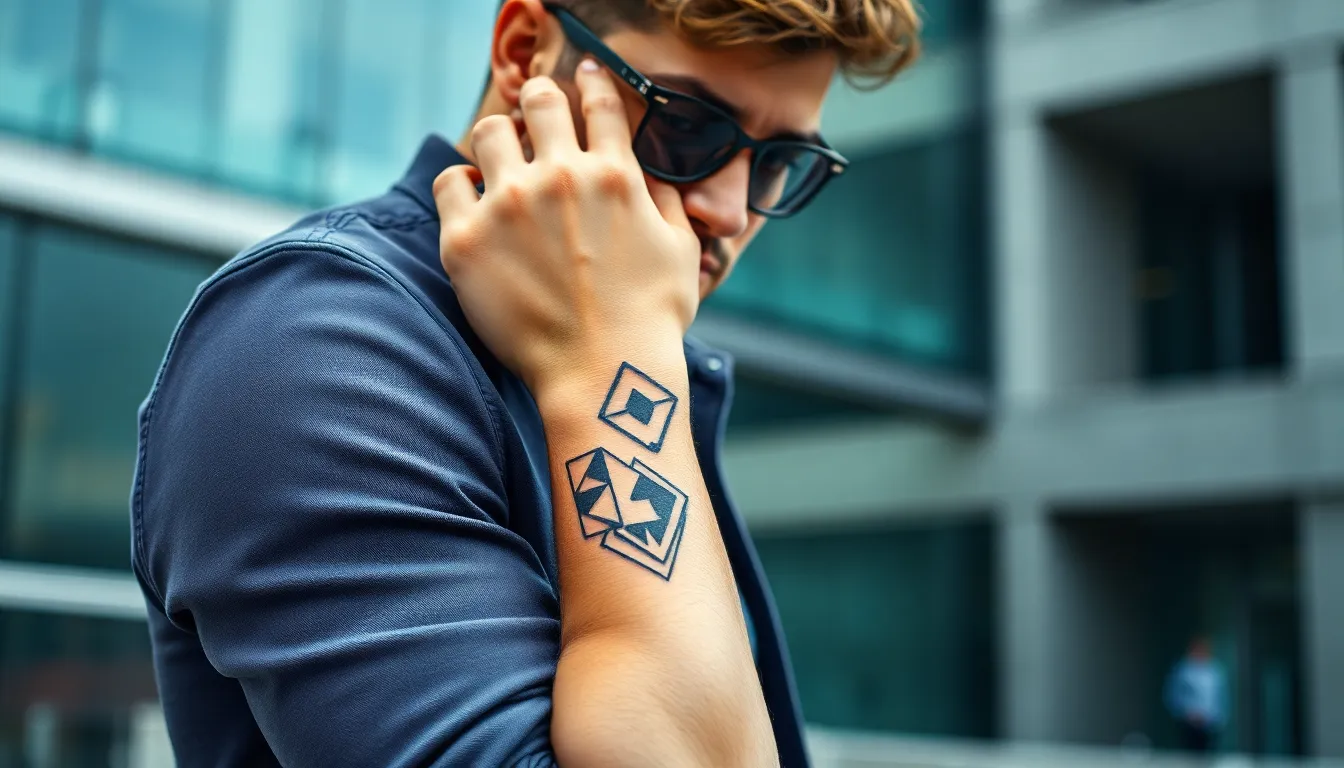
Contemporary men are increasingly drawn to minimalist patchwork designs that emphasize clean aesthetics and subtle sophistication. These modern approaches create striking visual impact through thoughtful spacing and strategic placement rather than bold, overwhelming imagery.
Geometric Shapes and Line Work Combinations
Geometric patchwork designs offer structured elegance through precise mathematical forms and clean line work. Triangles, squares, and hexagons create repeating patterns that interlock across the skin, establishing visual rhythm and artistic flow. Linear elements weave between these shapes, connecting individual pieces while maintaining distinct boundaries.
Contemporary men often choose this approach for forearm or chest placements, where the structured geometry complements natural body contours. Angular designs create masculine appeal while remaining sophisticated enough for professional environments. These combinations blend traditional tattooing techniques with modern artistic sensibilities, resulting in timeless yet contemporary body art.
Small Symbol Collections
Curated symbol collections allow men to showcase personal narratives through carefully selected meaningful icons. Anchors, arrows, and abstract shapes form cohesive stories when thoughtfully arranged across chosen body areas. Cultural symbols, animals, and minimalist representations of personal interests create individual chapters within the larger patchwork narrative.
Each symbol maintains its distinctive identity while contributing to the overall composition’s visual harmony. Men appreciate this approach because it allows gradual collection building over time, adding new pieces as life experiences evolve. The flexibility of small symbols means future additions can seamlessly integrate without disrupting existing design flow.
Negative Space Integration Techniques
Strategic use of negative space transforms simple designs into sophisticated artistic statements by allowing untouched skin to enhance each tattooed element. Gaps between symbols create visual breathing room, preventing designs from appearing cluttered or overwhelming. This technique emphasizes individual components while maintaining overall composition balance.
Professional artists use negative space to create contrast and highlight exact design elements, making each piece more impactful. The untouched areas serve as natural borders, clearly defining where one symbol ends and another begins. This approach requires careful planning but results in clean, modern aesthetics that age gracefully over time.
Sleeve-Building Patchwork Strategies for Long-Term Projects
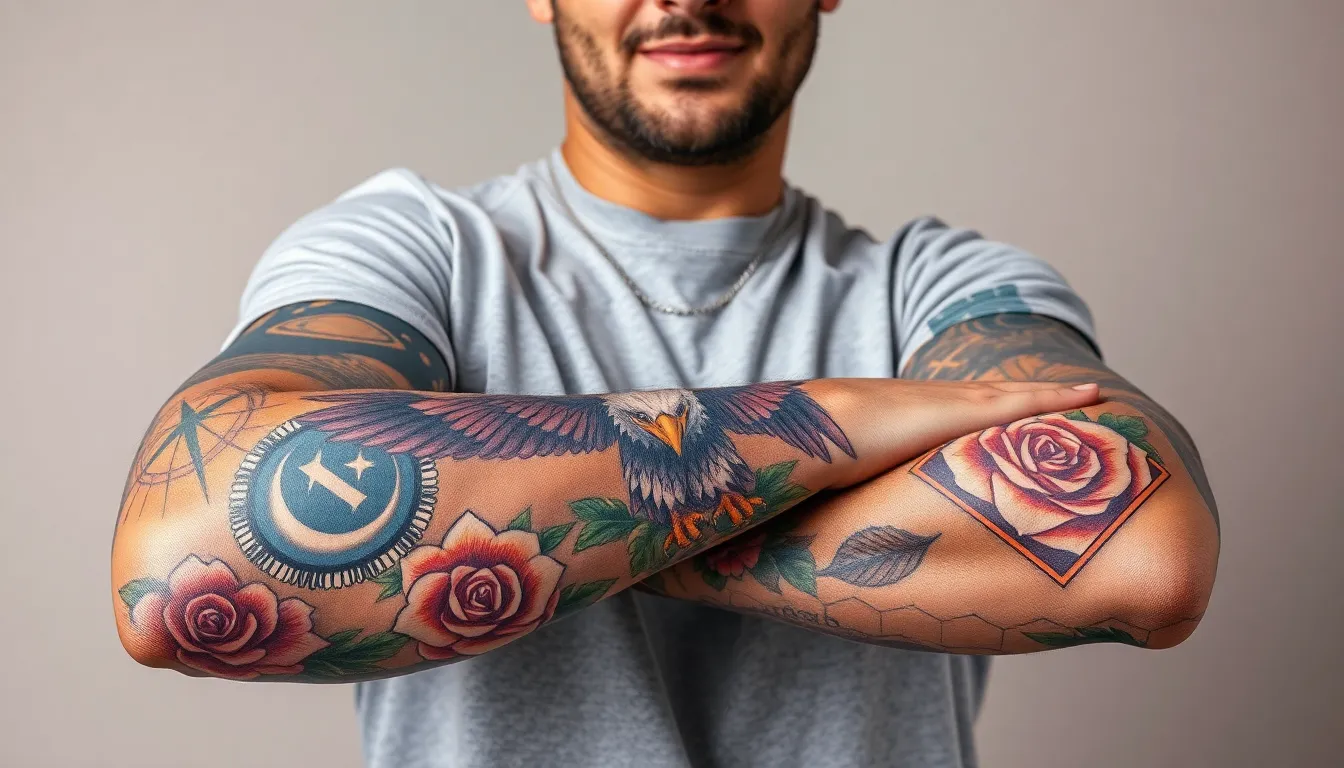
Building a cohesive patchwork sleeve requires strategic planning that extends beyond individual tattoo selections. We’ll explore proven techniques that transform separate pieces into unified, meaningful collections over time.
Starting with Anchor Pieces
Foundation tattoos establish the visual structure and thematic direction for your entire sleeve. These larger, bold pieces serve as focal points that define both style and narrative throughout your patchwork collection. Popular anchor designs include traditional American icons like eagles, anchors, and swallows that provide strong visual weight and cultural significance.
Strategic placement of anchor tattoos determines the flow and balance of your future sleeve. Position these key pieces at the shoulder, forearm, or upper arm locations where they’ll command attention while leaving space for complementary elements. Wildlife themes featuring wolves, bears, or tigers create powerful anchor points that resonate with masculine energy and personal symbolism.
Size considerations for anchor pieces should reflect their importance within your overall design. We recommend dedicating 20-30% of your available sleeve space to these foundational elements, ensuring they maintain prominence without overwhelming smaller supporting tattoos. This proportion allows for natural expansion while preserving the hierarchical structure that makes patchwork sleeves visually compelling.
Connecting Elements and Filler Options
Connecting elements transform isolated tattoos into cohesive artistic narratives through strategic design bridges. Patterned lines, geometric shapes, and shaded backgrounds create visual pathways that guide the eye between anchor pieces and smaller elements. These connectors prevent the chaotic appearance that poorly planned patchwork sleeves often exhibit.
Filler tattoos serve dual purposes by occupying negative space while reinforcing your chosen themes. Simple shapes, color washes, and minimalist designs maintain visual flow without competing for attention with your primary pieces. Popular filler options include dotwork patterns, traditional roses, and small symbolic elements that complement your anchor tattoos’ style and meaning.
Background elements unify disparate pieces through consistent visual treatment and atmospheric effects. Cloud formations, smoke effects, or subtle gradient shading create depth while connecting foreground elements naturally. We’ve observed that sleeves incorporating 15-20% background fillers achieve optimal balance between coverage and breathing room.
Balancing Colors and Themes Across the Arm
Color coordination prevents visual chaos while allowing individual pieces to maintain their distinct character. Establish a primary palette featuring 3-4 dominant colors, then use these consistently across all elements in varying intensities and applications. Traditional red and black combinations remain popular for their timeless appeal and versatility across different tattoo styles.
Thematic consistency creates storytelling opportunities that elevate patchwork collections beyond random assemblages. Wildlife motifs, cosmic elements, or cowboy themes provide narrative threads that connect seemingly unrelated pieces into meaningful collections. We recommend selecting 2-3 related themes rather than mixing completely disparate subjects for optimal cohesion.
Style mixing requires careful balance between contrast and harmony to achieve sophisticated results. Bold traditional designs pair effectively with minimalist blackwork when connected through consistent line weights or color choices. Neo-traditional illustrative pieces integrate seamlessly with classic American traditional elements when they share common design principles and complementary color schemes.
Popular Theme-Based Patchwork Collections
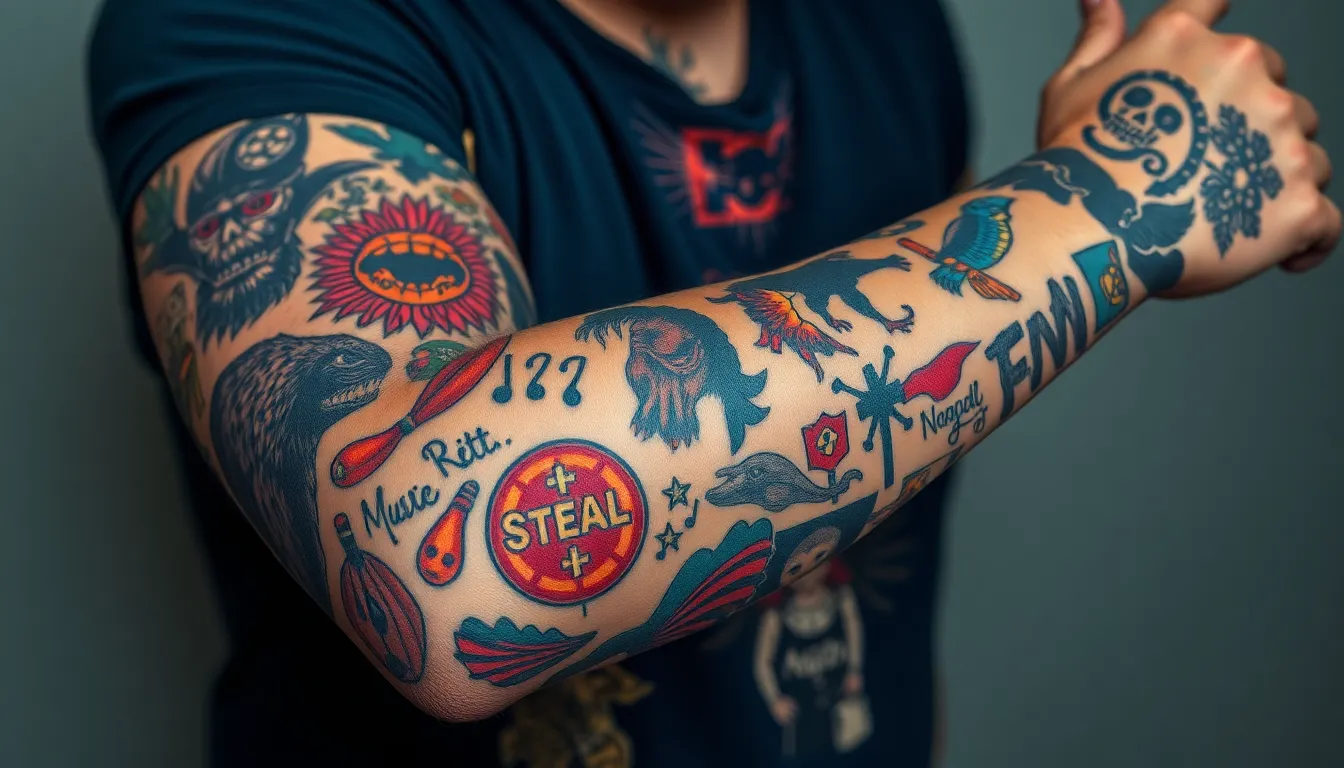
Thematic patchwork collections allow you to create cohesive narratives while maintaining the eclectic charm that makes these tattoos so appealing. These specialized groupings help tie together individual pieces through shared visual elements and personal meaning.
Horror Movie and Pop Culture References
Horror movie patchwork collections have become increasingly popular among men who want to showcase their love for classic films and cult favorites. These tattoos often feature iconic characters, memorable symbols, or pivotal scenes from beloved horror movies arranged in a sleeve or scattered placement pattern.
Bold lines and vivid colors characterize traditional American tattoo styles within horror themed collections. Blackwork approaches create more graphic, dramatic effects that emphasize the darker aesthetic of horror imagery. Characters from classic films like Freddy Krueger, Jason Voorhees, or Pennywise work exceptionally well as anchor pieces in these collections.
Pop culture references extend beyond horror to include comic book heroes, video game characters, and animated figures. These designs create storytelling effects on the skin by connecting different elements through shared visual themes or color palettes. Mixing traditional tattoo techniques with modern pop culture imagery results in collections that feel both timeless and contemporary.
Nature and Wildlife Groupings
Nature inspired patchwork tattoos capture the raw beauty of the natural industry through carefully curated collections of animals, plants, and landscapes. Wolves, bears, eagles, and other powerful animals serve as popular focal points in these thematic groupings.
Realistic styles showcase incredible detail and shading techniques that bring wildlife to life on the skin. Neo traditional approaches blend realistic elements with stylized linework and enhanced color palettes. Trees, flowers, and mountain landscapes provide excellent connecting elements between larger animal pieces.
Natural color palettes help unify these collections while allowing each piece to maintain its individual character. Earth tones, forest greens, and sunset oranges create cohesive visual flow across multiple tattoos. Personal totems and spirit animals add deeper meaning to these collections beyond their aesthetic appeal.
Music and Band Tribute Pieces
Music themed patchwork collections celebrate the soundtrack of your life through carefully chosen tributes to favorite bands, instruments, and musical symbols. These designs range from minimalist blackwork representations to detailed, colorful portraits of band members.
Band logos work exceptionally well as smaller filler pieces between larger portrait tattoos. Musical instruments like guitars, drums, and microphones create ever-changing focal points that anchor the collection. Lyric quotes in various fonts and styles add personal touches that reflect exact songs or albums.
Mixing different musical genres within one collection creates interesting visual contrasts while maintaining thematic unity. Rock and metal imagery pairs well with classical music elements, while hip hop and jazz influences can blend seamlessly with punk rock aesthetics. Concert tickets, vinyl records, and music notes serve as excellent connecting elements throughout these collections.
Placement Considerations for Patchwork Tattoo Layouts
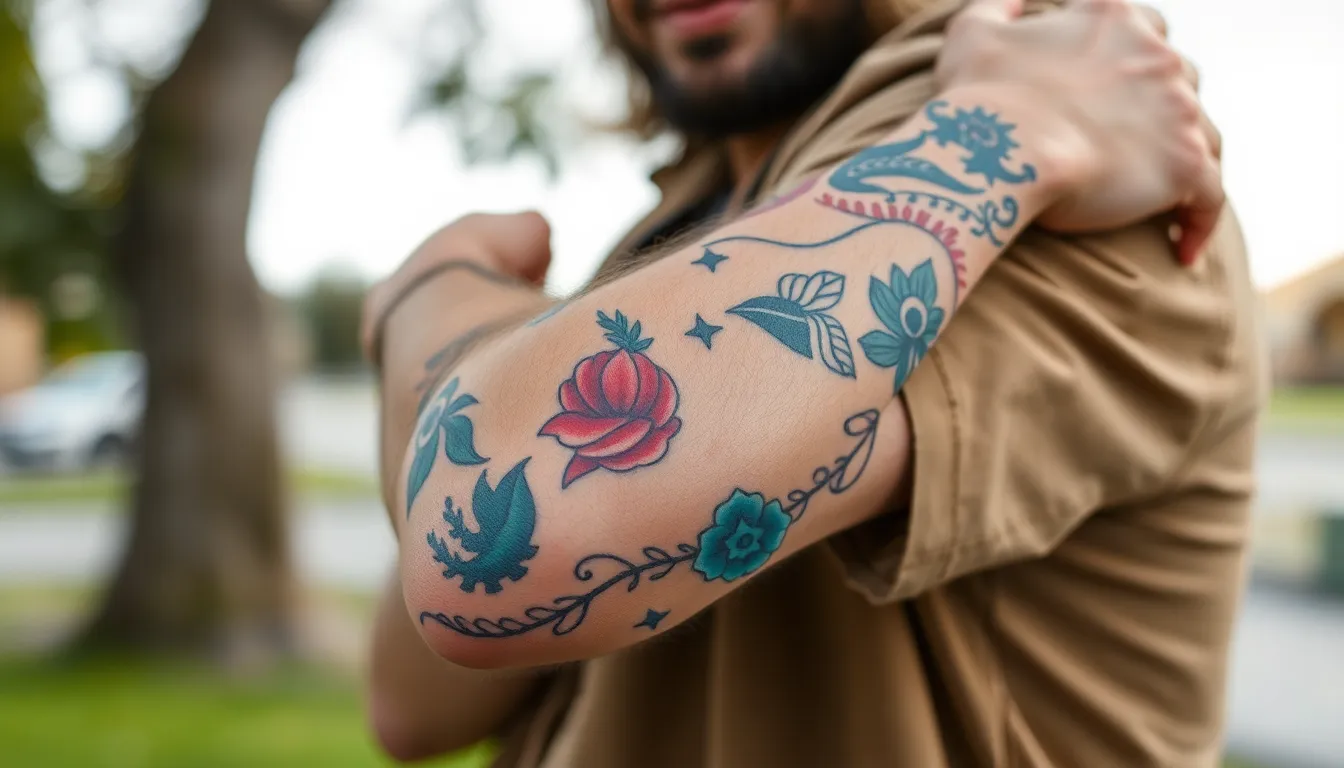
Strategic placement transforms individual tattoos into cohesive patchwork collections that tell your unique story. We’ll explore three key body areas that offer distinct advantages for creating ever-changing patchwork designs.
Forearm Patchwork Positioning
Forearms provide an ideal canvas for patchwork tattoos due to their elongated shape and high visibility. We recommend this area for men who want to showcase their collection while maintaining professional flexibility with long sleeves.
Building forearm patchwork requires careful spacing to ensure each piece stands out while contributing to the overall narrative. Consider starting with anchor pieces that occupy approximately 20-30% of your forearm space, then fill surrounding areas with complementary designs.
Mixing traditional motifs like anchors and swallows with minimalist blackwork creates visual balance and prevents overwhelming the space. We suggest leaving small gaps between pieces to maintain clarity and allow each tattoo to breathe within the composition.
Wrapping designs around the arm creates a ever-changing sleeve effect that looks different from every angle. Symmetrical placement works well for geometric patterns, while asymmetrical arrangements suit more organic, flowing designs that follow your arm’s natural contours.
Chest and Torso Arrangement Ideas
Chest and torso placement offers the largest canvas for expansive patchwork designs that can incorporate detailed shading and vibrant colors. We find this area perfect for men seeking to create bold, personal statements with their tattoo collections.
Asymmetrical arrangements across the chest create visual interest while allowing for future additions and modifications. Consider placing larger anchor pieces near your heart or shoulder areas, then building outward with smaller complementary tattoos.
Following your body’s natural contours ensures your patchwork flows harmoniously with your physique rather than fighting against it. We recommend mapping out your design while standing naturally to see how the tattoos will look in everyday positions.
Integrating different symbols and styles requires thoughtful color coordination to maintain cohesion across the broader surface area. Blackwork techniques can unify diverse pieces while allowing individual elements to shine through strategic shading and negative space.
Leg and Thigh Patchwork Strategies
Legs and thighs provide generous space for complex patchwork designs while offering more privacy than upper body placement. We suggest this area for men who prefer personal tattoo collections or work in conservative environments.
Vertical arrangements along the leg create elongating effects that complement your natural proportions. Strategic spacing prevents overcrowding while maintaining visual flow from hip to ankle, allowing each piece to contribute to the overall narrative.
Thigh placement accommodates larger anchor pieces that might overwhelm smaller body areas like forearms. We recommend using this broader canvas for detailed illustrative work or neo traditional styles that require more intricate shading and color work.
Mixing medium to large designs with varied themes works particularly well in leg patchwork collections. Consider grouping related symbols on each leg or creating complementary narratives that work together as a cohesive lower body collection.
Size and Scale Guidelines for Cohesive Patchwork Designs

Creating a unified patchwork collection requires careful attention to how different sized elements work together. We’ll explore the fundamental principles that transform individual tattoos into a cohesive visual narrative.
Mixing Large Statement Pieces with Small Fillers
Large statement pieces serve as the foundation of your patchwork design, commanding attention and establishing the overall aesthetic direction. Traditional anchors, detailed pin-up girls, and neo-traditional symbols work exceptionally well as these focal points, typically occupying 20-30% of your available space. Small fillers complement these bold elements by connecting gaps and creating natural flow throughout the composition.
Simple shapes, minimalist line work, and symbolic icons function as the perfect bridge between your statement pieces. These smaller elements shouldn’t compete for attention but rather enhance the overall narrative you’re building. Blackwork dots, geometric patterns, and single-line drawings fill spaces naturally while maintaining the visual hierarchy.
Strategic placement of fillers prevents overcrowding while ensuring your design reads well from both close and distant viewing angles. We recommend using 3-5 small fillers for every large statement piece to maintain proper balance and visual interest.
Maintaining Visual Balance Across Body Parts
Visual balance prevents your patchwork from appearing scattered or chaotic across different body areas. Arm and sleeve compositions benefit from even distribution of varying sized pieces around the circumference, creating symmetry and natural flow as the limb moves.
Torso and back placements require consideration of natural body contours and muscle definition. Larger designs work best in flatter or more prominent areas like the upper chest or shoulder blades, while smaller elements fill around curves and joints to maintain coherence.
Weight distribution plays a crucial role in achieving balance. We suggest placing your heaviest visual elements (dark, detailed pieces) opposite lighter elements (line work, negative space) to create equilibrium across the body part.
Proportion Tips for Different Body Types
Larger, muscular builds can support denser patchwork arrangements without appearing cluttered, allowing for bigger statement pieces and more intricate filler work. These body types accommodate bold, detailed designs that might overwhelm smaller frames.
Slimmer builds benefit from more spaced out designs with carefully selected smaller elements that complement rather than overwhelm the natural proportions. Strategic use of negative space becomes particularly important for these body types to maintain visual breathing room.
Proportional alignment with your body’s natural lines enhances movement and flow. Elongated tattoos work beautifully on limbs, while spread out patches complement broader areas like the back or chest, creating harmony between your body’s architecture and your tattoo collection.
Color Coordination Techniques for Patchwork Tattoo Collections
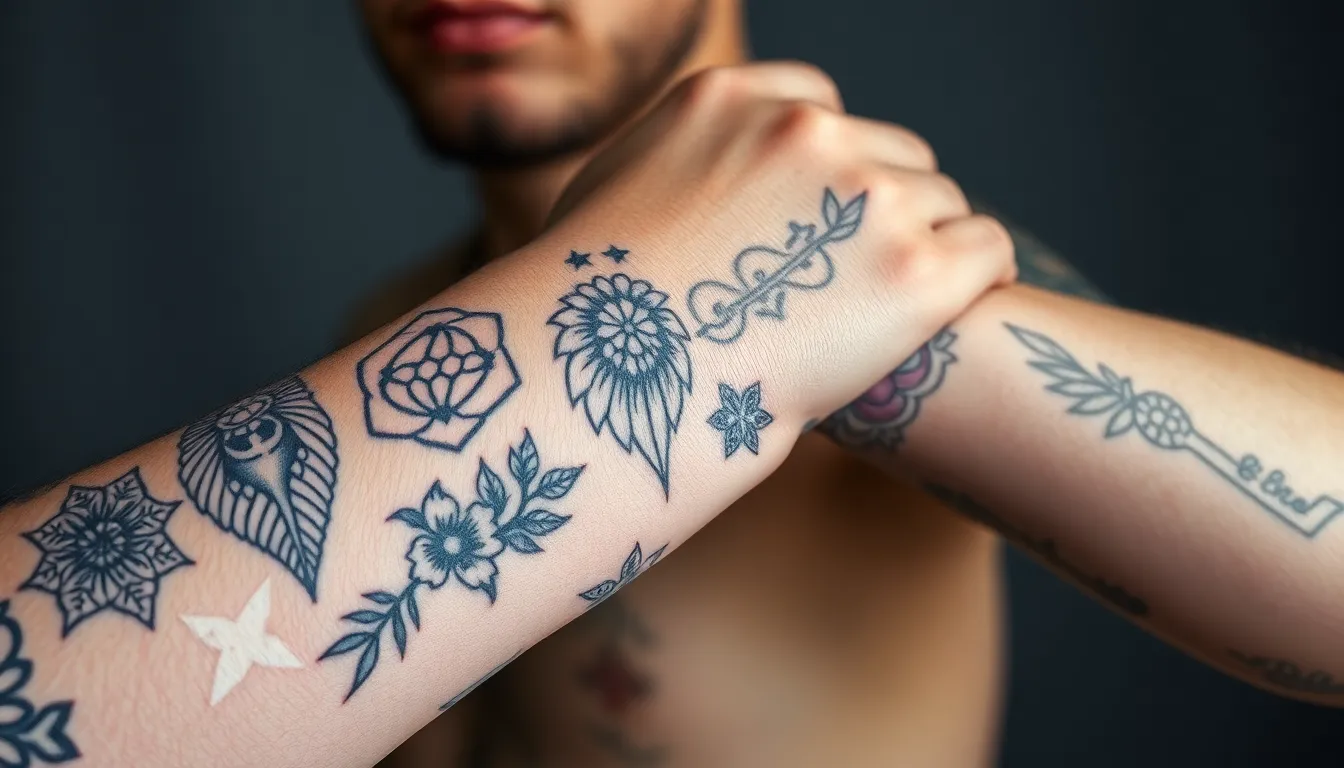
Color coordination elevates patchwork tattoo collections from random designs to cohesive artistic statements. We’ll explore proven techniques that unify diverse tattoo elements while maintaining their individual character.
Monochromatic Patchwork Approaches
Monochromatic schemes create unified patchwork collections using variations of a single color or hue. Black and gray variations form the foundation of most monochromatic approaches, allowing diverse tattoo elements to blend seamlessly while maintaining distinct textures and shading differences.
This technique particularly benefits men who prefer understated or classic styles while achieving rich depth in their patchwork designs. Single color schemes work exceptionally well when combining different tattoo styles like traditional flash pieces, geometric designs, and realistic portraits within the same collection.
Artists often employ various gray shades alongside deep blacks to create visual interest without breaking the monochromatic harmony. Each tattoo maintains its individual character while contributing to the overall aesthetic unity of the collection.
Complementary Color Scheme Strategies
Complementary color schemes use opposite colors on the color wheel to create vibrant contrast and visual interest within patchwork collections. Blue and orange combinations work particularly well for nautical themed collections, while red and green pairings enhance nature based designs.
These ever-changing color relationships help individual tattoos stand out while supporting an overall energetic composition. Bold traditional or neo-traditional motifs benefit significantly from complementary color applications, allowing patchwork collections to remain lively and balanced.
Strategic placement of complementary colors prevents overwhelming the overall design while ensuring each piece contributes to the collection’s visual impact. We recommend limiting complementary schemes to 2-3 color pairs maximum to maintain sophistication and avoid visual chaos.
Black and Gray Patchwork Combinations
Black and gray patchwork tattoos serve as the cornerstone for many male tattoo collections, offering timeless appeal and practical advantages. Various gray shades alongside solid black provide strong contrast, sharp detail, and subtle gradation that enhances the overall collection’s depth.
This technique ensures longevity and clarity as tattoos age, making it an ideal choice for full arm or body patchwork sleeves. Black and gray combinations complement other tattoo styles seamlessly, including blackwork, minimalist designs, and traditional pieces within the same patchwork collection.
Artists achieve remarkable versatility with black and gray palettes, creating everything from photorealistic portraits to abstract geometric patterns that maintain visual cohesion. These combinations work particularly well when building collections over time, as new additions integrate naturally with existing black and gray pieces.
Working with Tattoo Artists for Patchwork Projects
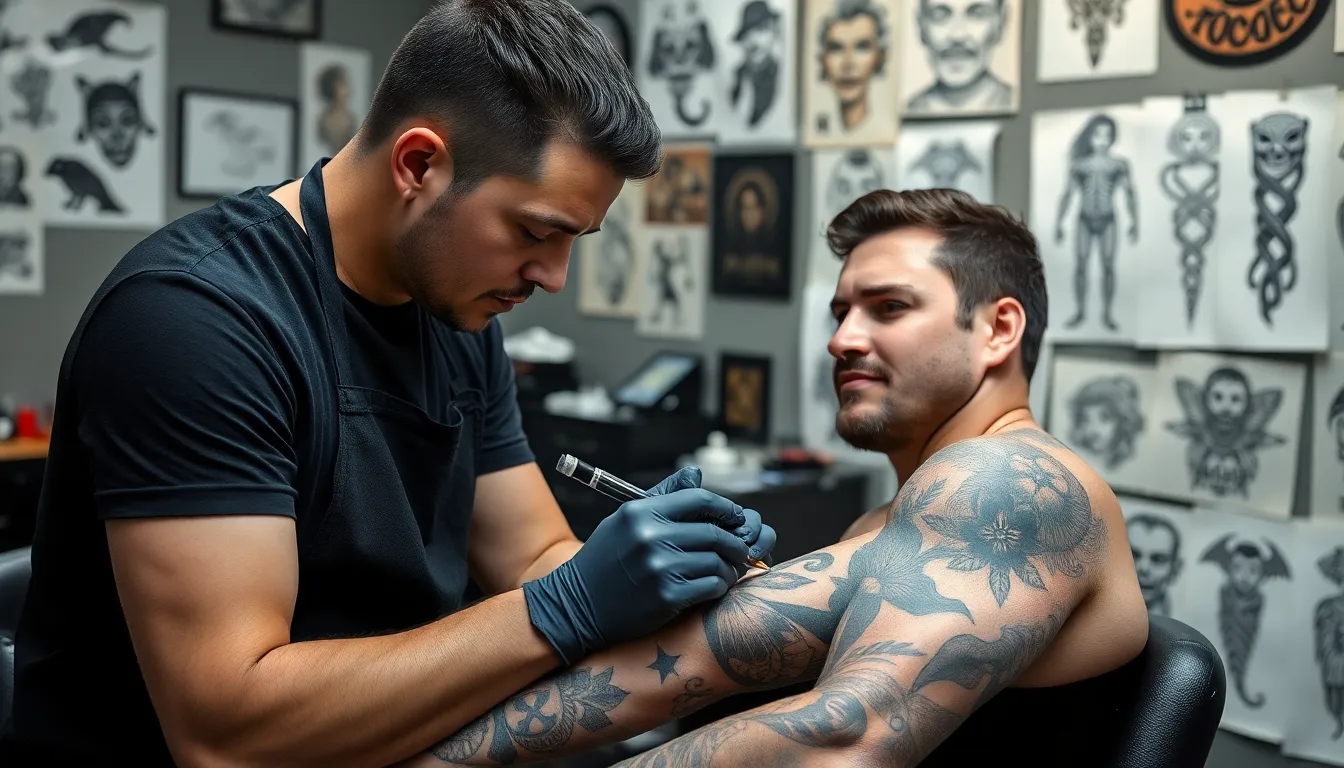
Building your dream patchwork collection requires more than just great design ideas. Success depends on finding the right artist and establishing a collaborative partnership that spans multiple sessions.
Finding Artists Experienced in Patchwork Styles
Selecting an artist familiar with patchwork tattoos makes the difference between a cohesive collection and a random assortment of designs. Look for portfolios showcasing completed patchwork sleeves, backs, or chest pieces where multiple tattoos blend harmoniously while maintaining their individual character.
Experienced patchwork artists understand how to integrate different styles within a single collection. They know when traditional American pieces can coexist with blackwork elements and how neo-traditional designs complement illustrative tattoos without creating visual chaos.
Review their work for evidence of successful style mixing and thematic consistency. Artists skilled in patchwork design demonstrate an eye for balance, showing how bold statement pieces anchor collections while smaller fillers create seamless transitions between larger elements.
Ask potential artists about their approach to multi-session projects. Those experienced in patchwork work understand that collections evolve over time and can adapt their techniques to accommodate future additions while preserving the integrity of existing pieces.
Communication Tips for Multi-Session Projects
Clear communication forms the foundation of successful patchwork tattoo projects that unfold over multiple appointments. Start each consultation by discussing your overall vision, including preferred styles, themes, and long-term goals for your collection.
Share reference images that capture the aesthetic you’re pursuing. Visual examples help artists understand whether you’re drawn to traditional flash collections, modern minimalist approaches, or exact thematic groupings like horror movie tributes or nature-inspired designs.
Document each session’s plans and how new pieces will interact with existing tattoos. Discuss placement strategies and how upcoming designs will maintain visual flow throughout your collection, ensuring each addition enhances rather than competes with previous work.
Establish a timeline that allows for proper healing between sessions. Most patchwork collections develop over months or years, giving you time to refine ideas and ensure each piece contributes meaningfully to your evolving narrative.
Maintain open dialogue about modifications or adjustments as your collection grows. Sometimes unexpected opportunities arise for connecting elements or incorporating filler pieces that weren’t part of the original plan.
Budget Planning for Ongoing Patchwork Collections
Patchwork tattoo collections require strategic financial planning since costs accumulate across multiple sessions over extended periods. Calculate expenses based on your artist’s hourly rate, the complexity of planned designs, and the number of sessions needed to complete your vision.
Factor in variables that affect pricing, including color work versus black and gray designs, detail levels, and the size of individual pieces. Traditional American flash pieces typically cost less than intricate illustrative work, while simple blackwork elements often require fewer touch-ups than heavily shaded designs.
Discuss package deals or payment plans with your chosen artist. Some tattoo professionals offer discounts for committed multi-session projects or allow installment payments that spread costs over time, making larger collections more financially manageable.
Plan for potential touch-ups and additional sessions as your collection evolves. Patchwork designs sometimes reveal opportunities for connecting elements or adding filler pieces that weren’t part of the original concept, requiring budget flexibility for unexpected additions.
Set aside funds for aftercare products and time off work if needed. Larger patchwork sessions may require recovery time, especially when working on areas like chest pieces or full leg coverage where healing affects daily activities.
Consider the long-term investment value of quality work over cheaper alternatives. Experienced patchwork artists charge premium rates, but their expertise in creating cohesive collections often eliminates the need for costly cover-ups or corrections later.
Conclusion
Patchwork tattoos offer men an incredible opportunity to express their individuality through carefully curated collections that tell personal stories. We’ve explored how strategic planning—from anchor pieces to color coordination—transforms random tattoos into cohesive artistic statements that evolve with your journey.
The key to successful patchwork lies in finding the right balance between spontaneity and structure. Whether you’re drawn to traditional flash designs or modern minimalist concepts we’ve shown you how to create collections that maintain their individual character while working together harmoniously.
Remember that building a patchwork collection is a marathon not a sprint. Take time to plan your themes consider placement carefully and work with experienced artists who understand your vision. With patience and thoughtful execution you’ll create a body art collection that’s uniquely yours.
Frequently Asked Questions
What exactly are patchwork tattoos?
Patchwork tattoos are collections of individual tattoo designs placed together on the body to create an eclectic, personalized canvas. Unlike traditional sleeve tattoos that flow seamlessly together, patchwork tattoos maintain their individual identity while contributing to an overall aesthetic. They allow for mixing different styles, themes, and time periods, creating unique narratives that reflect personal interests and experiences.
How do I start building a patchwork tattoo collection?
Begin with anchor pieces – larger focal tattoos that occupy 20-30% of your intended space and establish the thematic foundation. Choose designs that resonate with your personality and interests. Plan your color palette early, whether monochromatic, complementary colors, or black and gray. Consider your body placement strategy and work with an experienced artist familiar with patchwork styles.
Can I mix different tattoo styles in a patchwork collection?
Yes, mixing styles is a hallmark of patchwork tattoos. You can successfully combine traditional American flash with modern minimalist designs, geometric patterns with realistic portraits, or vintage nautical themes with contemporary symbols. The key is maintaining some unifying elements like color coordination, similar line weights, or thematic connections to ensure cohesion.
What are the best body placements for patchwork tattoos?
Forearms offer excellent visibility and spacing for balanced narratives. Chest and torso areas accommodate larger, detailed designs with opportunities for asymmetrical arrangements. Legs and thighs work well for vertical arrangements and can support intricate designs. Each placement should consider natural body contours and allow adequate spacing between individual pieces for visual breathing room.
How much should I budget for a patchwork tattoo collection?
Patchwork collections require multiple sessions and artists, making them a significant investment. Budget for 3-5 sessions minimum for a substantial collection, with each session ranging from $200-800 depending on size and complexity. Factor in touch-up costs and potential travel expenses if working with specialized artists. Plan for the collection to develop over months or years.
Should I use the same artist for all my patchwork tattoos?
While using one artist ensures style consistency, patchwork collections can benefit from multiple artists’ expertise in different styles. If using multiple artists, maintain communication about the overall vision and color palette. Ensure each artist understands their piece’s role in the larger collection. Some collectors prefer one primary artist who coordinates with specialists for specific elements.
How do I maintain thematic consistency in my patchwork collection?
Establish 2-3 core themes that resonate with your interests, such as horror movies, nature, or music. Create a mood board with reference images to visualize how pieces work together. Maintain consistent color palettes and similar design weights. Allow for some flexibility – rigid adherence to themes can limit creative opportunities that enhance your collection’s personal meaning.
What’s the difference between traditional and modern patchwork styles?
Traditional patchwork features classic American flash designs with bold outlines, vibrant colors, and iconic imagery like roses, daggers, and nautical symbols. Modern patchwork emphasizes minimalist aesthetics, geometric shapes, clean line work, and strategic use of negative space. Many collectors successfully blend both approaches, using traditional anchor pieces with modern connecting elements.
How long should I wait between patchwork tattoo sessions?
Allow 4-6 weeks minimum between sessions in the same area for proper healing. This timeline can vary based on tattoo size, placement, and individual healing rates. Use healing time for planning your next piece and consulting with your artist. Rushing the process can compromise healing and affect the overall quality of your collection.
Can patchwork tattoos be converted into traditional sleeves later?
Yes, patchwork collections can be connected with background elements, additional imagery, or filler work to create more traditional sleeve appearances. However, this requires careful planning and may alter the original patchwork aesthetic. Discuss long-term possibilities with your artist during initial planning to ensure future modifications remain feasible without compromising existing work.
